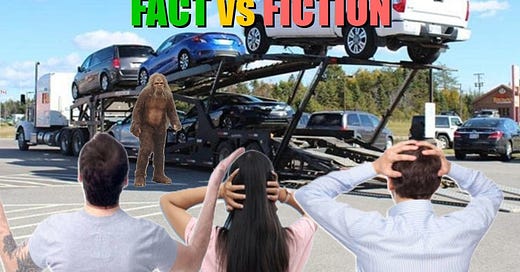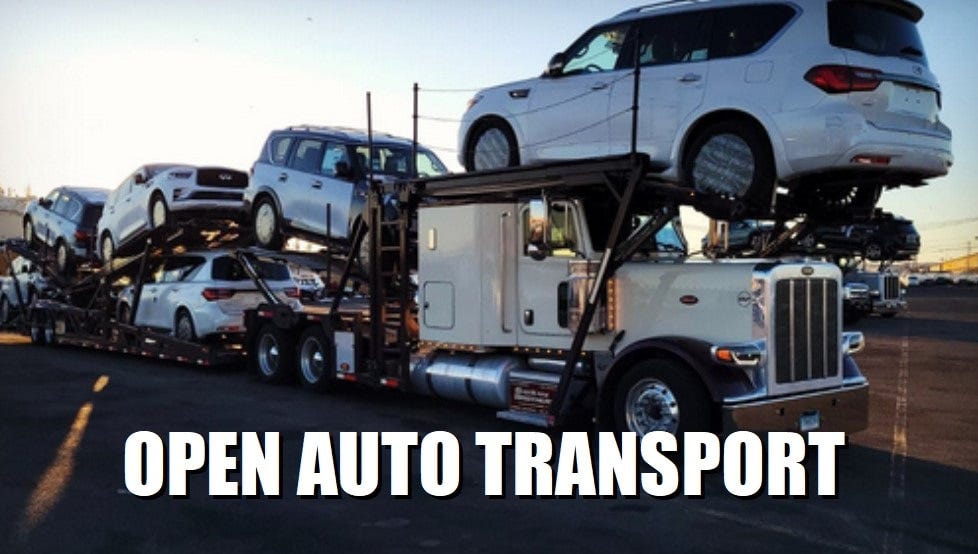Top 10 Auto Transport Myths You Shouldn’t Believe
Auto transport can be a convenient and efficient way to move a vehicle, but many misconceptions surround the industry. These myths can lead to unrealistic expectations or unnecessary concerns.
In this post, we’ll debunk some of the most common myths about auto transport and reveal the truth behind them.
Myth 1
Auto Transport Comes with Guaranteed Delivery Dates
Truth: While carriers provide estimated pickup and delivery windows, exact dates are rarely guaranteed due to variables like weather, traffic, road conditions, and delays in previous shipments. Most transport companies offer a time frame rather than a fixed date to ensure realistic expectations.
Myth 2
The Cheapest Quote Is Always the Best Option
Truth: Lowball quotes often result in poor service, delays, or bait-and-switch pricing tactics. Reliable auto transport companies base their rates on factors like distance, fuel costs, and demand. A quote that seems too good to be true likely comes with hidden fees or long wait times for a carrier willing to take the job.
Myth 3
It's Cheaper to Drive Your Car Than to Ship It
Truth: While driving may seem like the cheaper option, it comes with hidden costs such as gas, food, lodging, and potential wear and tear on your vehicle. Long-distance road trips also increase the risk of mechanical issues or accidents, making auto transport a safer and often more cost-effective alternative.
Myth 4
All Auto Transport Companies Are the Same
Truth: Not all transport companies operate with the same level of reliability, service, and transparency. Some companies are brokers that connect customers with carriers, while others own their fleet of trucks. Checking reviews, verifying FMCSA registration, and asking about insurance coverage can help customers choose a reputable transporter.
Myth 5
Personal Items Can Be Shipped Inside the Car
Truth: Most carriers prohibit personal belongings inside vehicles due to weight restrictions and liability concerns. If a carrier allows items in the car, they must be limited to a certain weight and placed in the trunk. However, these items are not covered by transport insurance.
Myth 6
Auto Transport is Only for High-End or Luxury Vehicles
Truth: Auto transport services are used for all types of vehicles, from everyday sedans to classic cars and motorcycles. Open carriers are a cost-effective option for standard vehicles, while enclosed carriers provide extra protection for high-value cars.
Myth 7
Auto Transport is Unsafe and Leads to Vehicle Damage
Truth: Professional auto transport is one of the safest ways to move a car long distances. Reputable carriers use secure loading techniques, tie-down straps, and safety protocols to ensure vehicles remain undamaged during transit. While minor damage is possible, incidents are rare, and transport insurance provides coverage for any unexpected issues.
Myth 8
You Can Track Your Vehicle in Real Time Like a Package
Truth: Unlike package delivery services, most auto transport companies do not provide real-time GPS tracking. However, customers can contact their broker or carrier for updates on their vehicle’s location and estimated delivery time. Some premium services may offer GPS tracking for added convenience.
Myth 9
Enclosed Auto Transport is Always Necessary
Truth: While enclosed transport offers extra protection from weather and road debris, it’s typically only needed for classic, luxury, or exotic cars. Standard vehicles are safely transported on open carriers, which are more affordable and widely used.
Myth 10
Auto Transport is Complicated and Takes Too Long
Truth: The process is straightforward when working with a reputable company. Customers need to book a shipment, prepare their car, and wait for pickup. Delivery times depend on distance, but most cross-country shipments take 7-10 days. Expedited shipping is available for those who need faster transport.
By understanding these myths and the realities of auto transport, customers can make informed decisions and have realistic expectations when shipping their vehicles.






